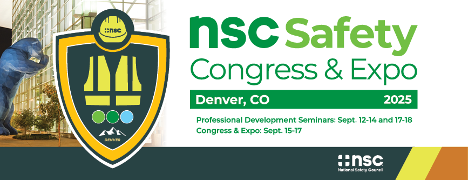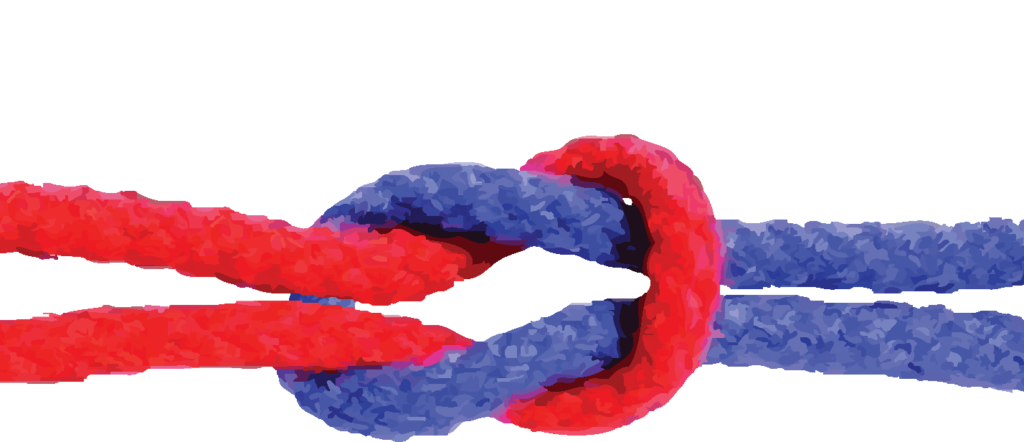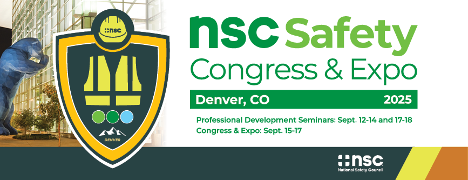Author - John McBride, SPHR, SHRM-SCP
By Dan Markiewicz MS, CIH, CSP, RMP
(reprinted from ISHN Industrial Safety and Hygiene News)

Photo credit: E+ / Getty Images Plus
March 19, 2024
If all you want out of your OHS work is a paycheck, I suggest that you practice interview skills and job-hop often to maximize your income. Headhunter firms, such as Zippia, find that the average person today will change jobs 12 times in their lifetime with an average stay with their employer for 4.3 years.1
If you have spent four or more years earning an OHS related degree, then you are likely a career thinker looking to maximize your professional growth. If this is the case, then I suggest you develop and follow a lifelong OHS career plan. A lifelong-career plan doesn’t mean you stay with one employer until you retire, as this is unlikely to happen for a variety of reasons. A lifelong career plan is more akin to pursuit of self-actualization in Maslow’s hierarchy of needs or the “full realization of one’s potential” in one’s chosen endeavor (see Wikipedia “Self-actualization”).
Initial plan
I was introduced to a lifelong OHS career plan by a mentor back in 1987, when I was already 10 years out of college and aggressively climbing the corporate ranks to maximize salary. My plan at the time was to see a substantial pay increase from my employer every two years. If that didn’t happen, then I would job-hop. My mentor pointed out the fallacy of my plan: I was nearing the maximum an employer would pay for someone to perform OHS duties. I needed a new performance metric for motivation.
Lifelong plan — longevity
I am extremely pleased to see where the lifelong plan has guided me. To appreciate where I am with my plan, consider that I am required to take my RMD from my 401k plan for the first time this April. You must guess my age. Next, I plan to retire in 2036 — at the same age my grandmother retired from her 50+ year active business. I can achieve these longevity objectives because pursuit of self-actualization is a much stronger motivator with greater intrinsic value than money.
Elements of the lifelong plan
Envision a pyramid with six sections labeled: Education; Experience; Exemplary; Expatiate; Expire; and Epitaph. My mentor and I agreed that these six topics would form my “emphasis” periods within the plan. Education forms the base of the pyramid and epitaph is at its peak. Each period below grows to support the period above. The timeframe for each emphasis period, except epitaph, is roughly 10-15 years in length. For example, I have recently entered my Expatiate period. Definition of expatiate is “to move freely or at will or speak or write at length or in detail.”
Deep understanding
The main objective within each section is to understand the details of OHS – to see what others do not see. For example, the American Board of Industrial Hygiene, formed in 1960 but known since 2019 as the Board for Global EHS Credentialing (BGC), does not give CIH® certification maintenance points for machine guarding training. BGC interprets guarding to be a safety activity and not an occupational health activity. Do you agree with BGC’s guarding interpretation?
To understand the details of an OHS issue such as machine guarding, major documents such as ANSI / ISO 12100:2012 Safety of machinery – General principles for design – Risk assessment and risk reduction must be thoroughly read and understood. Informative Annex B to the ANSI document provides ten groups of examples of hazards, hazardous situations, and hazardous events. These ten groups include: 1) Mechanical hazards; 2) Electrical hazards; 3) Thermal hazards; 4) Noise hazards; 5) Vibration hazards; 6) Radiation hazards; 7) Material / substance hazards; 8) Ergonomic hazards; 9) Hazards associated with the environment in which the machine is used; and 10) Combination of hazards.
Applying the above evidence rather than superficial understanding, we find that machine guarding is most definitely CIH® worthy. My mentor always encouraged me to “dig deeper” to understand every OHS issue. Where most pros see a splash guard on a machine as a simple, perhaps safety concept, I am encouraged to determine how much metalworking fluid (MWF) mist is reduced by a properly designed and maintained splash guard. Dig deeper. There is no OSHA PEL or ACGIH TLV for MWF but the recently settled international UAW contract with the big-three US automakers has new OELs for MWF. What information drove the UAW to make compliance with new MWF OELs worthy of contract language? But if boric acid is contained in some MWF then maybe employers or representatives of workers should consider a DNEL to address developmental toxicity. Dig deeper. DNELs are calculated by chemical manufacturers and may be best viewed as a product liability warning and not some European legislation concept. But developmental toxicity DNELs are for the protection of the unborn child. The unborn child is not an employee. Who is responsible for the protection of the unborn child from workplace hazards? Dig deeper. The more you practice this activity, the more you will see OHS different from the pack.
Position for trends
Lifelong doesn’t mean planning for OHS issues 30 or more years down the road. Planning mostly looks at trends about five years out and then adjusts the plan accordingly. For example, my mentor believed that I would face age discrimination the longer I remain in the OHS field. Nothing in recent trends suggest a change on ageism behavior in the United States and I have planned for this risk accordingly.
Look for trends. The Future of Jobs Report 2023 by The World Economic Forum finds that employers anticipate a 23% churn of jobs by 2027.2 The churn of jobs is the mixture of emerging jobs added and declining jobs eliminated. Per the jobs report, 50% of surveyed companies (800+) expect AI (artificial intelligence) to create job growth while 25% expect it to create job loss. An emphasis on a deep understanding of AI was not in my lifelong plan back in 1987. It’s there now.
Summary
Work should be considered a livelihood e.g., paycheck secondary to one’s life. Nearly every OHS pro helps develop annual plans or perhaps 5-year outlook plans for their employer’s benefit. It would be nice to see every OHS pro develop and be guided by a lifelong career plan that puts themselves first. Without commitment to a career plan, time escapes and is not harnessed to reach a full realization of one’s career potential.
Reaching one’s career potential should be a fun but challenging game. If done right, you should begin to see things differently than most OHS pros. As I see things, my next dozen years of OHS activity should be exceedingly exciting and rewarding. Lots of fun to look forward to.
See more articles from our March 2024 issue!
References
1. Average Number of Jobs in a Lifetime [2023]: How Many Jobs Does The Average Person Have - Zippia (https://www.zippia.com/advice/average-number-jobs-in-lifetime/)
2. WEF_Future_of_Jobs_2023.pdf, weforum.org (https://www3.weforum.org/docs/WEF_Future_of_Jobs_2023.pdf)
KEYWORDS: careers
education
safety professionals






